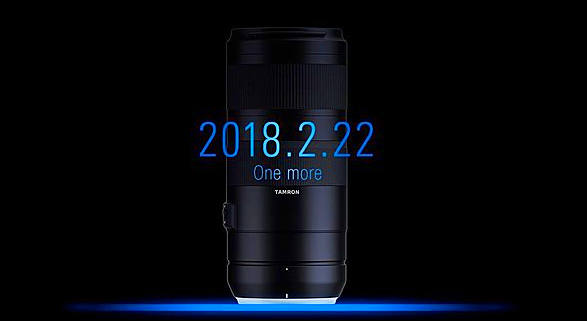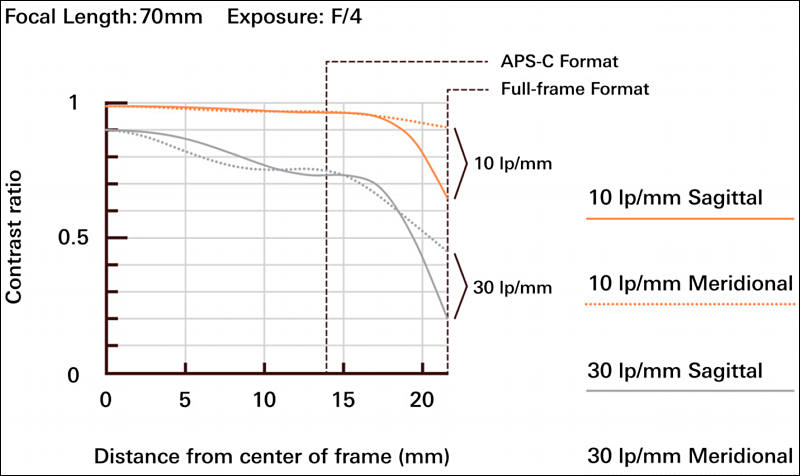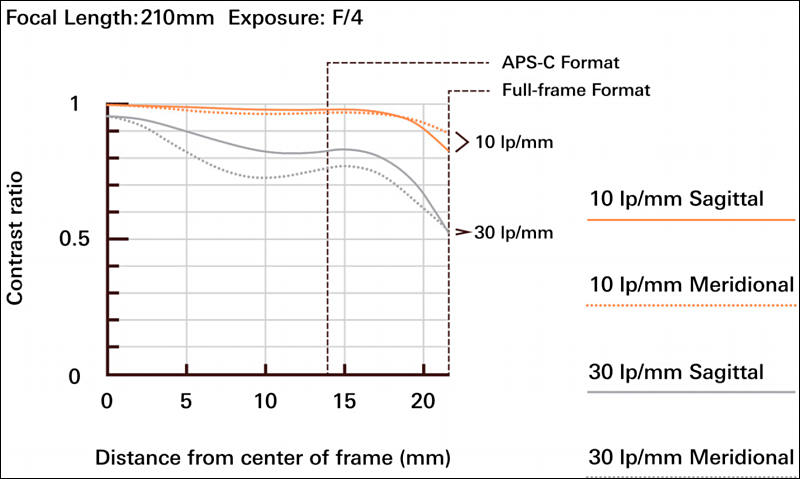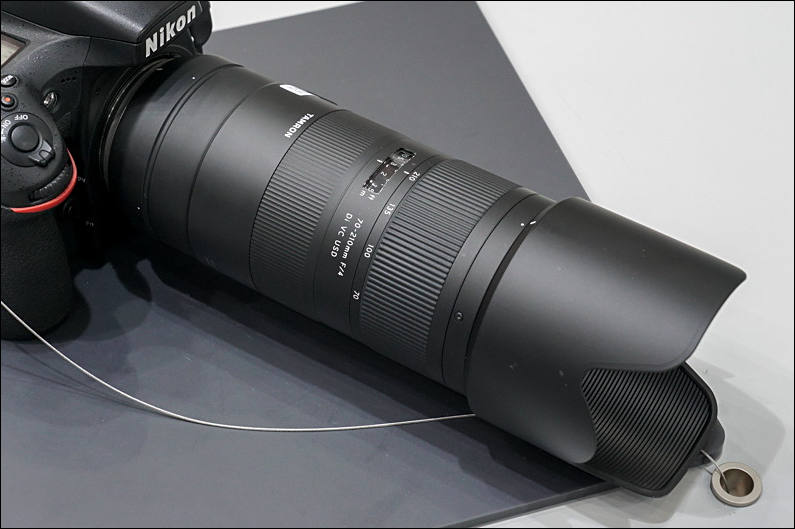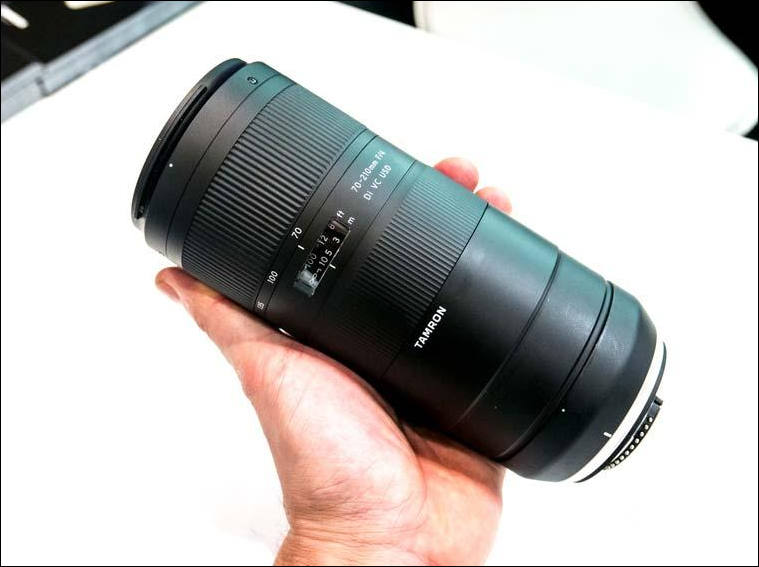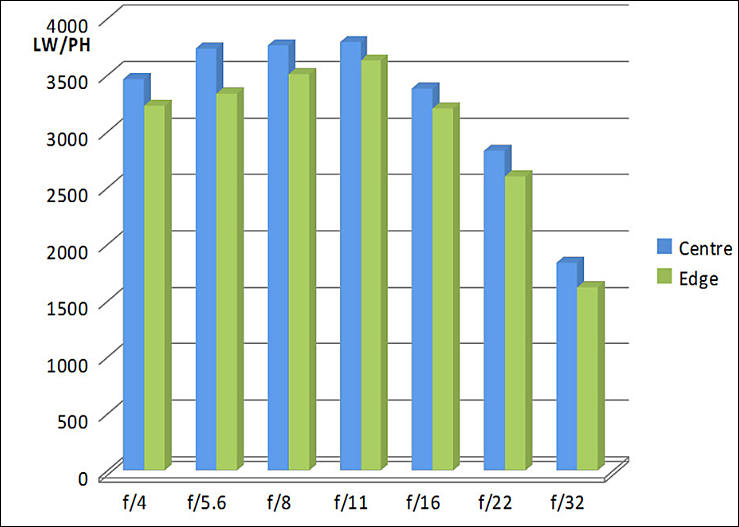
-
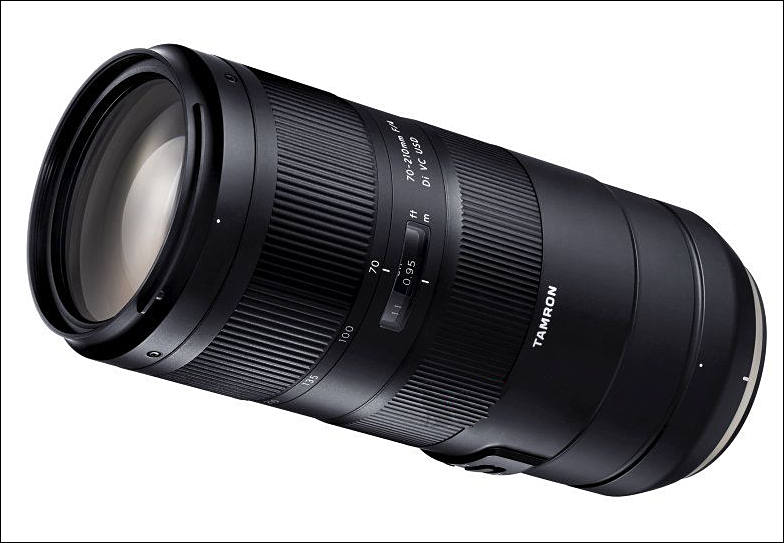
Specifications
- 20 lenses in 14 groups
- Good optical image stabilization with up to 4 steps advantage
- 1:3.1 max magnification
- 9 diaphragm blades
- 67mm filters
- 76 mm x 175.26 mm
- 859 g
- Canon EF and Nikon F mounts
- February 22, 2018 preorder start
- Will be available in April 2018
- $799, preorder at
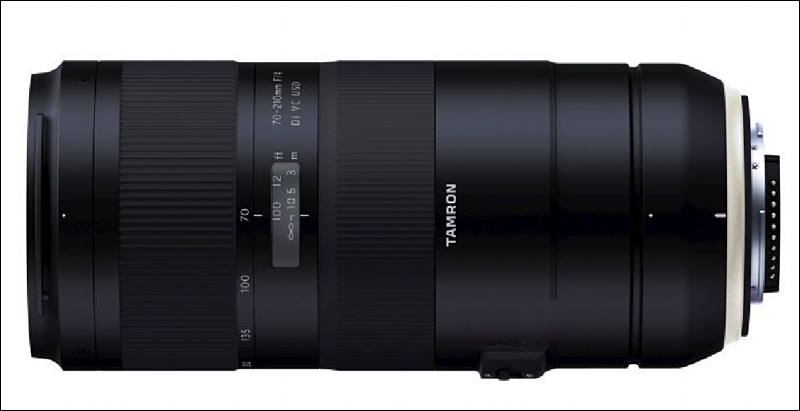
-
Specifications added
-
UK PR
February 22, 2018, Tamron Co., Ltd. announces the launch of the 70-210mm F/4 Di VC USD, a compact telephoto zoom lens for full-frame DSLR cameras. This new lens provides superb optical performance throughout the entire zoom range and features a maximum magnification ratio of 1:3.1, the highest in its class.* The design includes an internal zoom mechanism that provides solid mechanical construction and stable, reliable operation. The lens also employs a Dual MPU (Micro-Processing Unit) design, which enables high-speed and high-accuracy AF performance as well as powerful VC (Vibration Compensation) image stabilization for flexible and versatile use in various situations. For dependable outdoor use, the new telephoto zoom is equipped with Fluorine Coating and Moisture-Resistant Construction.
PRODUCT HIGLIGHTS
- High-performance telephoto zoom lens with a constant maximum aperture of F/4
- Class-leading magnification ratio and MOD (Minimum Object Distance)
- Highly reliable internal zoom mechanism
- High-speed Dual MPU (Micro-Processing Unit)* control system delivers responsive autofocus performance plus outstanding VC (Vibration Compensation) image stabilization
- Fluorine Coating
- Moisture-Resistant Construction
- Compatible with Tamron tele converter
- Compatible with TAMRON TAP-in ConsoleTM, an optional accessory
- Optional tripod mount compatible with Arca-Swiss style quick release plates
- Electromagnetic diaphragm system now used also for Nikon-mount lenses
The optical construction of 20 elements in 14 groups uses three LD (Low Dispersion) lens elements to effectively compensate for axial and transverse chromatic aberrations, thereby ensuring crisp and crystal clear image quality across the entire frame. The lens also features a constant maximum aperture of F/4 throughout the entire zoom range, thus providing superior control over depth-of-field and excellent bokeh.
The lens boasts the highest-in-class maximum magnification ratio of 1:3.1 and the shortest-in-class* MOD of 0.95 m.
Thanks to an internal zoom mechanism, the physical length of the lens does not change during zooming. So-called “zoom creep” is impossible because the overall length never extends. Furthermore, the design provides a very robust and sturdy feeling, and the non-rotating front element makes the use of polarizing filters much easier.
The Dual MPU system includes two high-performance MPUs dedicated to VC processing and lens system control. Both MPUs have a DSP (Digital Signal Processing) block that provides high-speed digital signal processing, improving the computing power of the entire system. This new control system achieves high-speed and precise AF performance as well as assured VC effects.
A new control system using two high-performance MPUs (micro-processor units).
Excellent autofocus performance
The AF drive system uses a USD (Ultrasonic Silent Drive) ring-type ultrasonic motor for outstanding responsiveness and to ensure fast, precise focusing. Plus the new zoom is equipped with a Full-time Manual Focus override mechanism that enables a photographer shooting with AF to instantly make fine manual focusing adjustments without switching the AF-MF mode switch.
Outstanding vibration compensation effects
The lens is equipped with Tamron’s proprietary VC system and achieves the CIPA image stabilization performance level of 4 stops.* Even in low light or with slow shutter speeds, photographers can enjoy shake-free handheld shooting with ease and comfort.
The surface of the front element is coated with a protective fluorine compound that has excellent water- and oil-repellant qualities. The front surface is easier to wipe clean and is less vulnerable to the damaging effects of dirt, dust, moisture or oily fingerprints, allowing for much easier maintenance. The coating also provides an enhanced level of durability, and will sustain its effectiveness for years.
Seals are located at the lens mount area and other critical locations to prevent infiltration of moisture and/or raindrops to provide Moisture-Resistant Construction. This feature affords an additional layer of protection when shooting outdoors under adverse weather conditions.
The new lens is also compatible with both the 1.4x (Model TC-X14) and 2.0x (Model TC-X20) Teleconverters, which increase the focal length of the lens to 1.4 times and 2 times the original, respectively. For more detailed information about tele converters, please refer to the Tamron website.
The lens is compatible with the optional TAMRON TAP-in Console, an optional accessory product that provides a USB connection to a personal computer, enabling users to easily update a lens’s firmware as well as customize features including fine adjustments to the AF and VC.
An Arca-Swiss style tripod mount is available as an optional accessory. Featuring a hinge-type ring section, connection is easy even when the lens is mounted on a camera.
An electromagnetic diaphragm system, which has been a standard feature for Canon-mount lenses, is now employed in Nikon-mount lenses.* More precise diaphragm and aperture control is possible because the diaphragm blades are driven and controlled by a built-in motor through electronic pulse signals.
-

 sa1900.jpg800 x 533 - 50K
sa1900.jpg800 x 533 - 50K -
This Tamron lens is a virtually identical copy of the Nikon 70-200mm f4, down to the same number of lens elements, weight and dimensions. I have the Nikon, it's an excellent full-frame zoom for daylight shooting and the VR works well for shooting 1080p video handheld. It also works well with speedboosters on MFT cameras, giving you an effective FOV of 50-140mm at f2.8. The major difference with the Nikon version of the Tamron is its incompatibility with MFT adapters and speedboosters. Like other recent Tamron lenses, it uses an electromagnetic iris to control lens aperture and lacks the mechanical aperture lever required by all current Nikon-to-MFT adapters.
-
But the Canon version would work with the relevant Canon Speedbooster, wouldn't it?
-
@roly - Presumably, but you'd need to try out the Canon-mount Tamron 70-200 with the Speedbooster to be sure.
-
Our Tamron 70-210mm F4 Di VC USD Lens In Depth Interview
-

 sa2666.jpg800 x 569 - 68K
sa2666.jpg800 x 569 - 68K -

 sa2926.jpg800 x 862 - 65K
sa2926.jpg800 x 862 - 65K -
Review

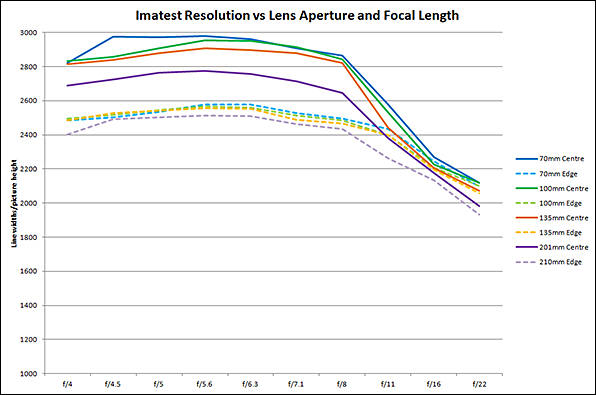
http://photoreview.com.au/reviews/lenses/full-frame/tamron-70-210mm-f-4-vc-usd-lens-model-a034

 sa3161.jpg596 x 396 - 34K
sa3161.jpg596 x 396 - 34K
 sa3160.jpg596 x 395 - 40K
sa3160.jpg596 x 395 - 40K -
Samples

https://www.dpreview.com/sample-galleries/9414440590/tamron-70-210mm-f4-di-vc-usd-sample-gallery/

 sa3190.jpg800 x 581 - 49K
sa3190.jpg800 x 581 - 49K -

 sa3217.jpg739 x 527 - 59K
sa3217.jpg739 x 527 - 59K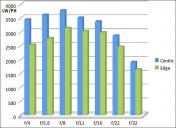
 sa3218.jpg717 x 520 - 57K
sa3218.jpg717 x 520 - 57K
 sa3219.jpg800 x 531 - 128K
sa3219.jpg800 x 531 - 128K -

 sa3335.jpg800 x 542 - 74K
sa3335.jpg800 x 542 - 74K -

 sa3741.jpg800 x 531 - 114K
sa3741.jpg800 x 531 - 114K -

 sa5900.jpg800 x 535 - 76K
sa5900.jpg800 x 535 - 76K -
Tamron 70-210mm f/4 Di VC USD Lens for Canon EF, $379
https://www.bhphotovideo.com/c/product/1393218-REG/tamron_afa034c_700_70_210mm_f_4_di_vc.html
Howdy, Stranger!
It looks like you're new here. If you want to get involved, click one of these buttons!
Categories
- Topics List23,991
- Blog5,725
- General and News1,353
- Hacks and Patches1,153
- ↳ Top Settings33
- ↳ Beginners256
- ↳ Archives402
- ↳ Hacks News and Development56
- Cameras2,367
- ↳ Panasonic995
- ↳ Canon118
- ↳ Sony156
- ↳ Nikon96
- ↳ Pentax and Samsung70
- ↳ Olympus and Fujifilm101
- ↳ Compacts and Camcorders300
- ↳ Smartphones for video97
- ↳ Pro Video Cameras191
- ↳ BlackMagic and other raw cameras116
- Skill1,960
- ↳ Business and distribution66
- ↳ Preparation, scripts and legal38
- ↳ Art149
- ↳ Import, Convert, Exporting291
- ↳ Editors191
- ↳ Effects and stunts115
- ↳ Color grading197
- ↳ Sound and Music280
- ↳ Lighting96
- ↳ Software and storage tips266
- Gear5,420
- ↳ Filters, Adapters, Matte boxes344
- ↳ Lenses1,582
- ↳ Follow focus and gears93
- ↳ Sound499
- ↳ Lighting gear314
- ↳ Camera movement230
- ↳ Gimbals and copters302
- ↳ Rigs and related stuff273
- ↳ Power solutions83
- ↳ Monitors and viewfinders340
- ↳ Tripods and fluid heads139
- ↳ Storage286
- ↳ Computers and studio gear560
- ↳ VR and 3D248
- Showcase1,859
- Marketplace2,834
- Offtopic1,320


